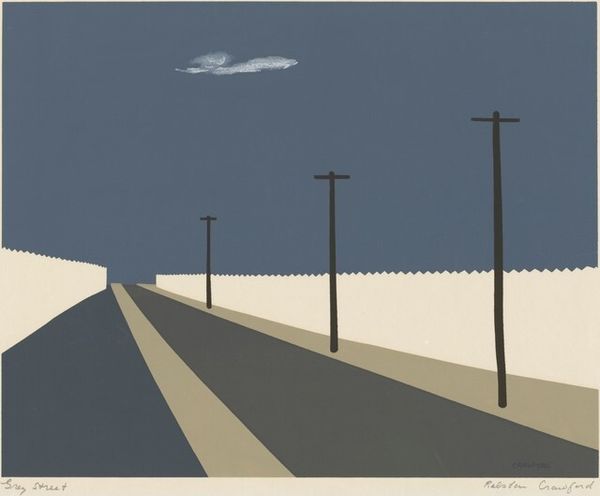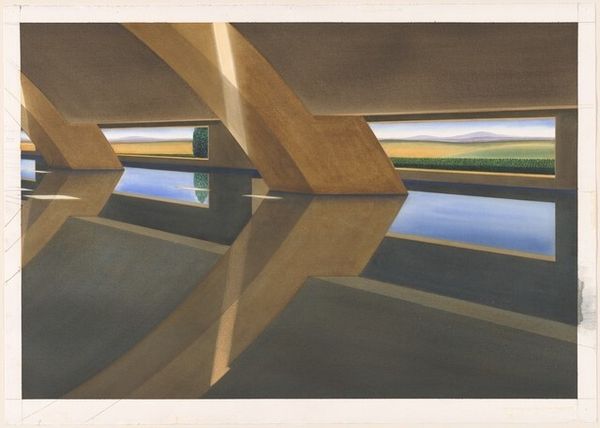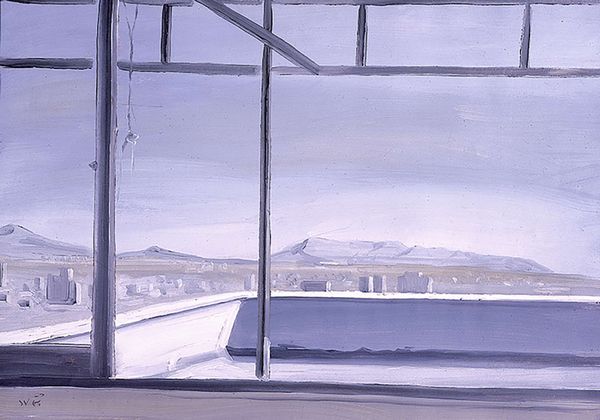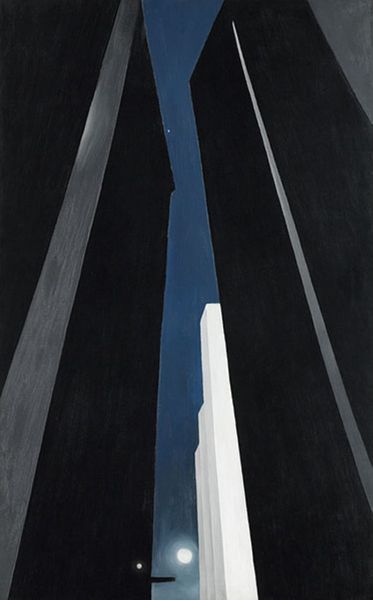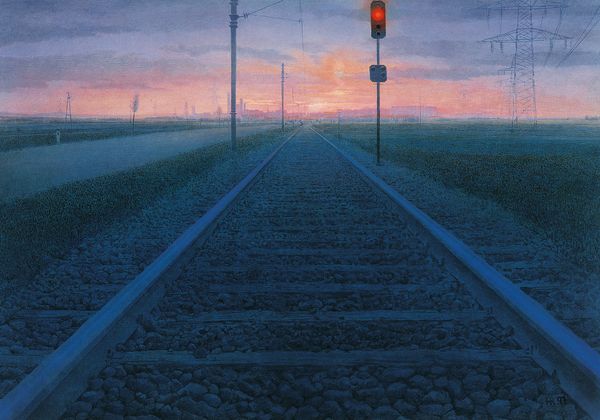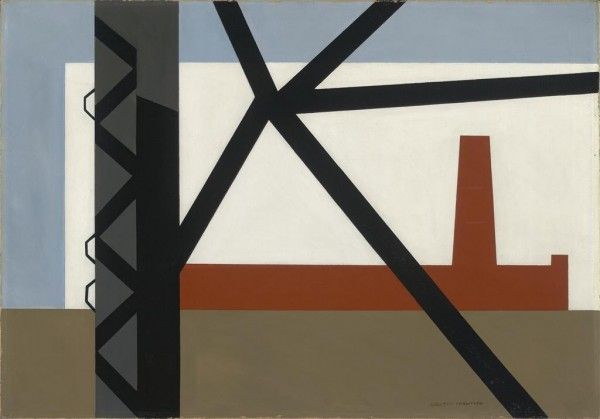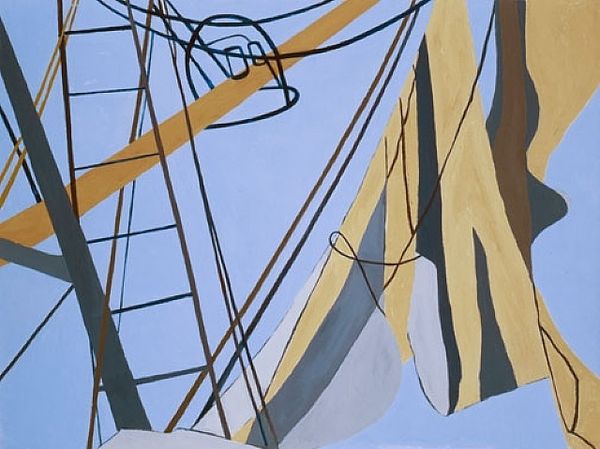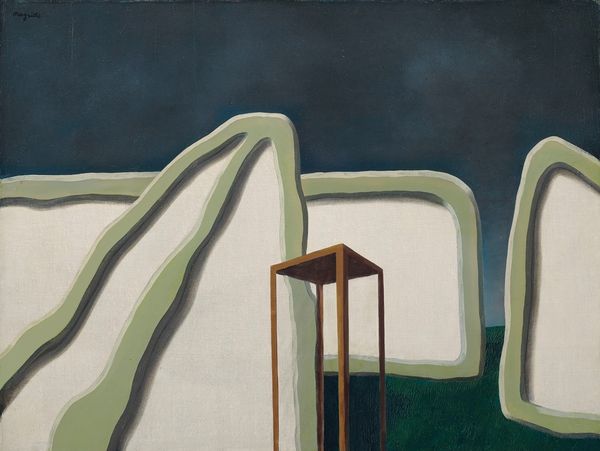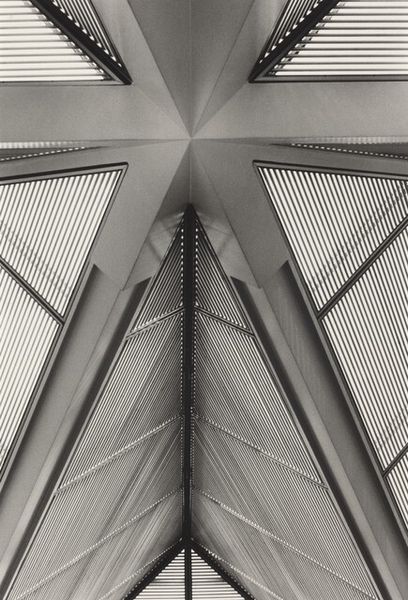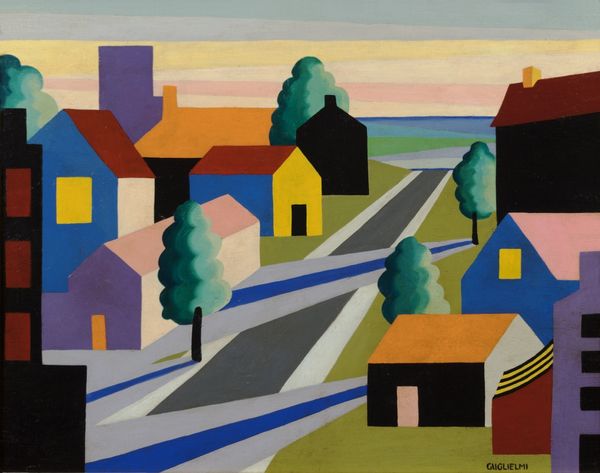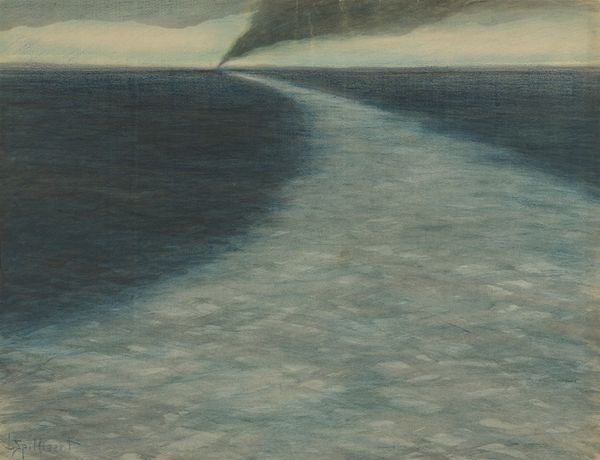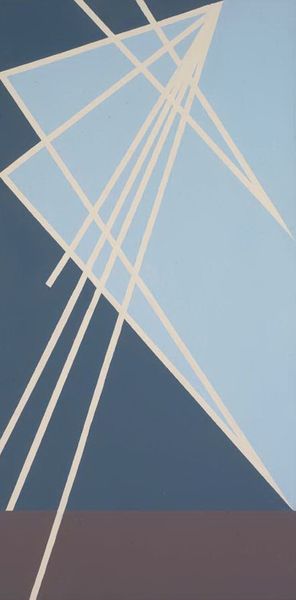
Whitestone Bridge 1940
0:00
0:00
ralstoncrawford
Memorial Art Gallery (University of Rochester), Rochester, NY, US
painting, acrylic-paint
#
precisionism
#
painting
#
landscape
#
acrylic-paint
#
geometric
#
cityscape
#
realism
Dimensions: 102.24 x 81.28 cm
Copyright: Ralston Crawford,Fair Use
Editor: So, this is Ralston Crawford's "Whitestone Bridge" from 1940. It's an acrylic on canvas, and it's... striking. There's a kind of stark beauty in its geometry. It feels both futuristic and oddly empty. How do you read it? Curator: The emptiness is key. Crawford painted this during a period of enormous social and political upheaval, right on the cusp of the US entering World War II. Bridges, traditionally symbols of connection, become almost cold, monumental objects in the face of such uncertainty. The precisionist style emphasizes that feeling. Editor: So, the style itself reflects the era? Curator: Precisely. Precisionism, with its sharp lines and industrial subjects, was often interpreted as a celebration of American progress. But here, doesn't it feel more like an elegy, a monument to something potentially lost or at risk? Think about the role of public works projects during the New Deal, and then consider the looming threat of war… the image’s "realism" might be concealing deeper anxiety. Editor: That's a compelling point. The solitary cloud only emphasizes the solitude. So, the "cityscape" theme has something deeper. Curator: Exactly. It questions what "cityscape" really means in times of societal shift. This isn't simply a picture *of* a bridge. It's about what that bridge *represents*, its shifting symbolic weight during that crucial historical moment. Editor: I hadn't considered that so directly. It completely changes how I see it – it makes me wonder what artists will make of today’s big construction projects. Curator: And that's exactly the point, isn't it? Art becomes a historical document in its own right. We read its lines, colors and composition but these are signifiers of other, often submerged stories.
Comments
No comments
Be the first to comment and join the conversation on the ultimate creative platform.
